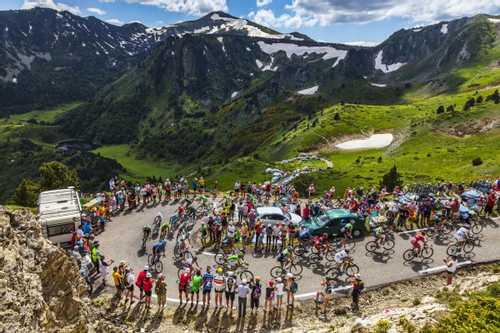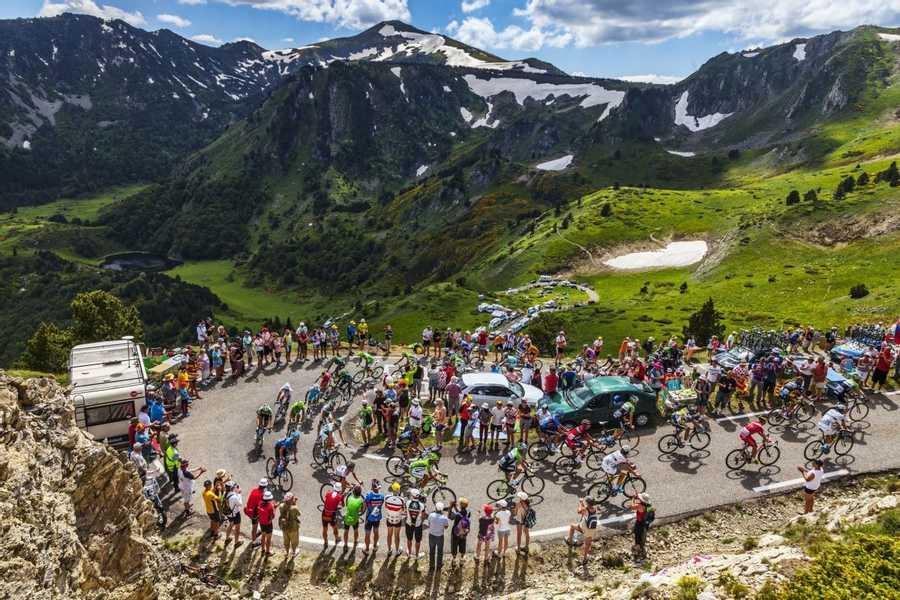Learn more about sports with this collection
How to set boundaries to protect your energy
How to cultivate positive energy
Why rest and recovery are important
“Le Grande Boucle”
- Also known as “Le Grande Boucle” or “Le Tour”, Tour de France is the world’s largest annual sporting event.
- It’s a cycling competition that is held in France every year (sometimes neighboring countries) and takes place in 21 stages with a course that covers approximately 3,500 kilometers.
- Cyclists from around the world gather in France to compete for the chance win the prestigious Tour de France trophy and a cash prize of €450,000 (just over $500,000).
- This is a sport that garners 3.5 billion television viewers, and over 12 million spectators annually. It’s a thrilling sport and is completely free to attend.
7
148 reads
How Tour de France Works
- Tour de France is a team sport that features a total of 198 cyclists in 22 teams of nine. Over the course of 21 days, usually in July, cyclists cover a race course extending 3,500 kilometers.
- Tour de France is split into 21 stages: Nine flat stages, three hilly stages, seven mountain stages (including five summit finishes), two individual time trials and two rest days.
- One stage is performed every day, covers roughly 225 kilometers, and takes about five and a half hours to complete. Each stage has a winner, and the rider that completes the most stages in the shortest amount of time goes onto win the overall title.
8
55 reads
Tour Of France: Common Strategies
- Breakaways — Riders tend to cycle in a main group called a peloton, and have smaller groups break away to the front at almost every stage. Breakaways are a great method to use if a cyclist is not an exceptional climber or sprinter, because it gives them a chance at victory.
- Attacks frequently occur on climbs, and involve a rider abruptly breaking away from the peloton at an extremely high speed in hopes that the other riders won’t be able to keep up with them.
- A sprinter is a cyclist that finishes a race by suddenly accelerating to a high speed, and often uses the slipstream of an individual cyclist or a group of cyclists in order to conserve energy.
- Lead-out Trains — This is a strategy used to setup a rider for a sprint finish. One rider on the team rides at a very high speed, and the team’s sprinter follows close behind to benefit from their slipstream. This reduces wind resistance, and enables the sprinter to achieve faster speeds without using as much energy as they normally would.
8
47 reads
Tour de France: Some Of The Terms Used
- Grand Départ — The first stage of Tour de France.
- Peloton — French for “group.” Peloton is the main group of cyclists who ride together for coherence.
- Breakaway — A rider or group of riders who have broken away to lead the race.
- Slipstreaming — Riding close behind another rider in order to benefit from almost no air resistance.
- Bonking — Also known as “hit the wall.” This when a rider has completely run out of energy.
- Domestique — Every team has a leader, and the remaining riders (domestiques) support the leader in whatever way they can in order for them to win stages, accumulate points and hopefully win the tour.
- Directeur Sportif — Each team has a director, known as directeur sportif, that follows riders during the race and gives them instructions, water, helps with mechanical issues and replaces damaged bikes.
- Flamme Rouge — French for “red flag” this is used to indicate the last kilometer of the race.
- Lanterne Rouge — French for “red light” this is the last rider in the general classification/the tour. This is not a dishonorable term.
- Musket Bag — A shoulder bag containing food and water that is handed to riders at feeding stations.
- SAG Wagon — A vehicle that follows cyclists and picks them up when they can no longer ride due to injury, fatigue, biking failure, and also carries gear.
8
24 reads
CURATED BY
If you don't measure it, you can't improve it. Working on my own personal gols and objectives.
More like this
2 ideas
Here's a look at the Tour de France
edition.cnn.com
4 ideas
Tour de France 2021: everything you need to know
bikeradar.com
5 ideas
Read & Learn
20x Faster
without
deepstash
with
deepstash
with
deepstash
Access to 200,000+ ideas
—
Access to the mobile app
—
Unlimited idea saving & library
—
—
Unlimited history
—
—
Unlimited listening to ideas
—
—
Downloading & offline access
—
—
Personalized recommendations
—
—
Supercharge your mind with one idea per day
Enter your email and spend 1 minute every day to learn something new.
I agree to receive email updates

